Ultraviolet radiation, or UV, comes to earth from the sun. The ozone layer protects those of us on the ground from most of it but some does reach the surface. So what else do you need to know about UV?
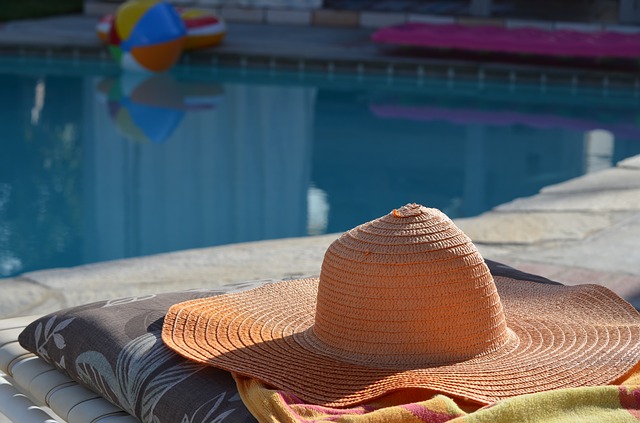
1) Your all-over tan may look good, but you’re still damaging your skin
Sunburn and even a tan is a sign of over-exposure to UV – that’s physical damage to your skin caused by UV. Premature skin ageing is another sign of damage.

2) Over-exposure to UV can lead to skin cancer
Not everyone who is over-exposed to UV will develop skin cancer, but thousands of people in the UK do every single year. There are questions over whether you are more likely to develop cancer due to your individual genetics, but it’s generally considered that those who repeatedly over-expose themselves to high levels of UV, from the sun, sunbeds or lamps, run the highest risk of developing skin cancer. That’s why some countries have banned sunbeds and others, such as the UK, have passed laws to restrict who can use them. Scientists think over exposure to UV, from the sun or sunbeds, can also lead to cataracts.

3) Skin type matters
Although we can all burn from over-exposure to UV, how quickly we’re affected depends on our skin type. People with darker skin can tolerate more than those with lighter skin types. When it comes to estimating how much UV exposure you can take, probably the best advice we can give is to know your own skin.
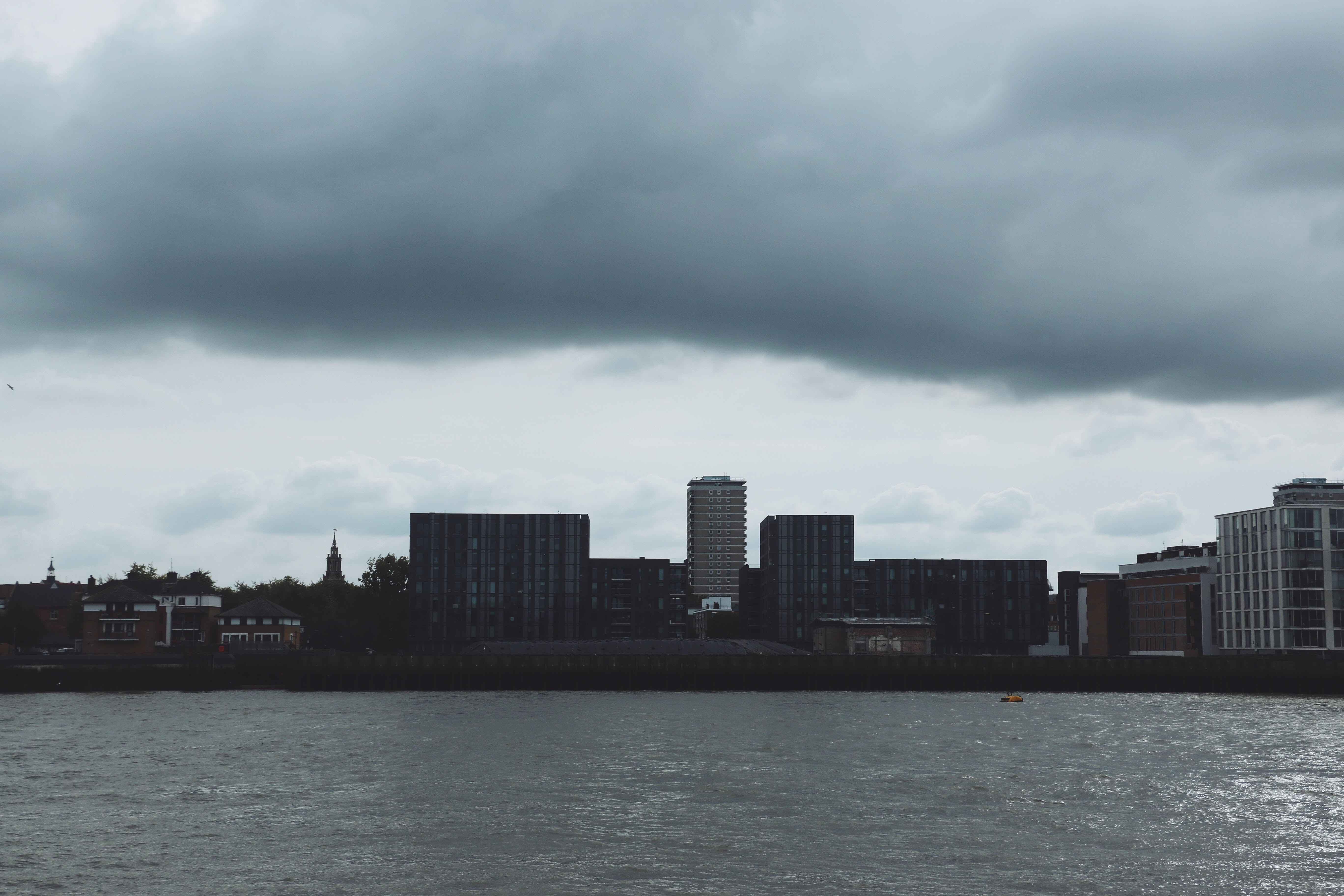
4) You can still burn on a cloudy day
Sometimes people get burned when it clouds over because they assume clouds protect them – they don’t. Clouds can absorb some incoming UV, but you can still damage your skin.
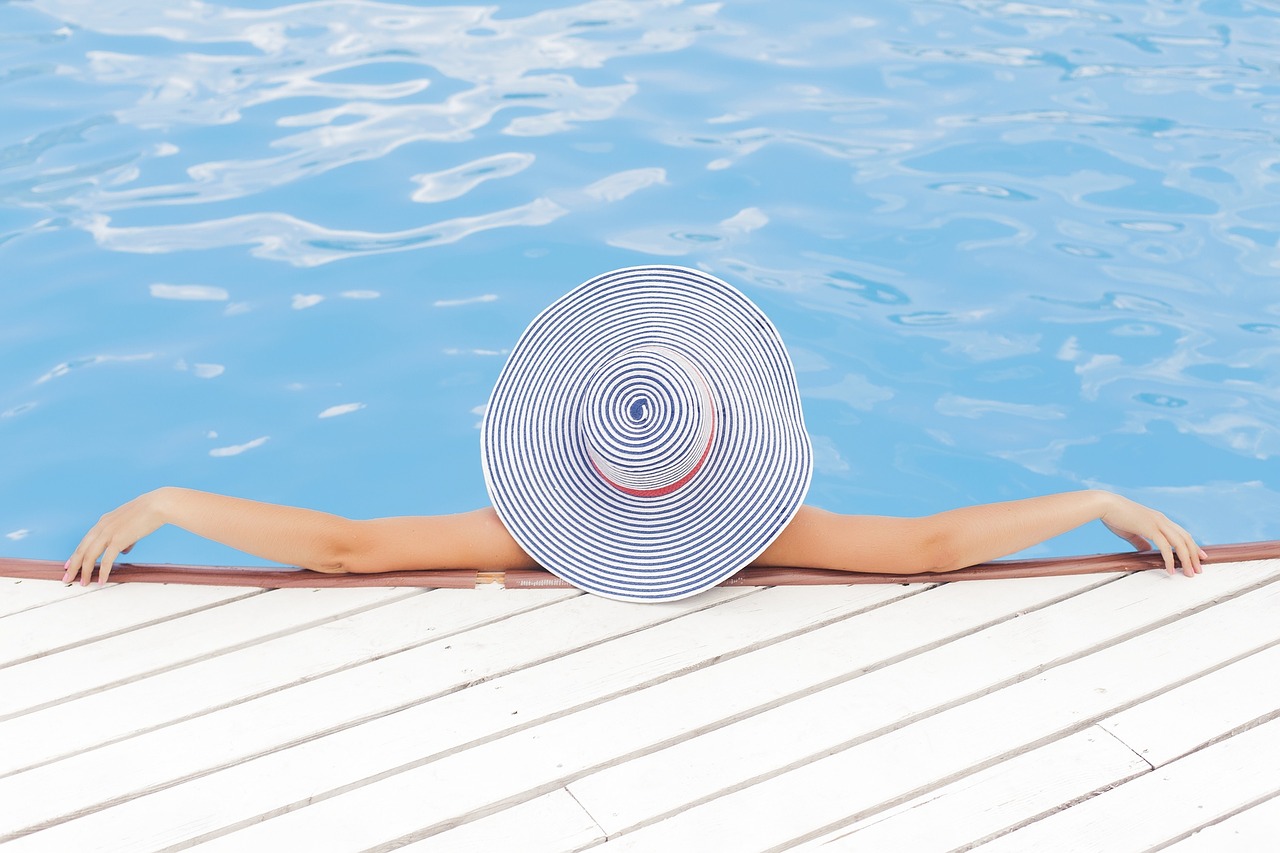
5) We can acclimatise to UV
It takes a while for the body to acclimatise to UV exposures. Most of us, wherever we live, get most of our UV exposure during the late spring and summer. But occasionally we in the UK get higher UV levels early in the year and when that happens we can get caught out and burn more easily than we may in summer. And that’s because from autumn until spring we spend more time indoors and the UV from the sun is generally weaker. So if you get a burst of UV early in the season, or perhaps in the winter, don’t be surprised if you burn more easily. That’s why it’s really important to take extra care on winter sun holidays and when skiing.
6) It’s possible to measure UV
The World Health Organization has developed a UV index showing us when we should be taking protective action. Here at PHE we use this Index to inform our advice, including when it’s time to cover up. The UV Index indicates the degree of risk of sunburn and runs from 1-20. The highest level recorded in the UK is usually 8, but only in Southern England. In sunnier climates, the UV Index may be much higher than experienced in the UK, even if the temperature is relatively low.
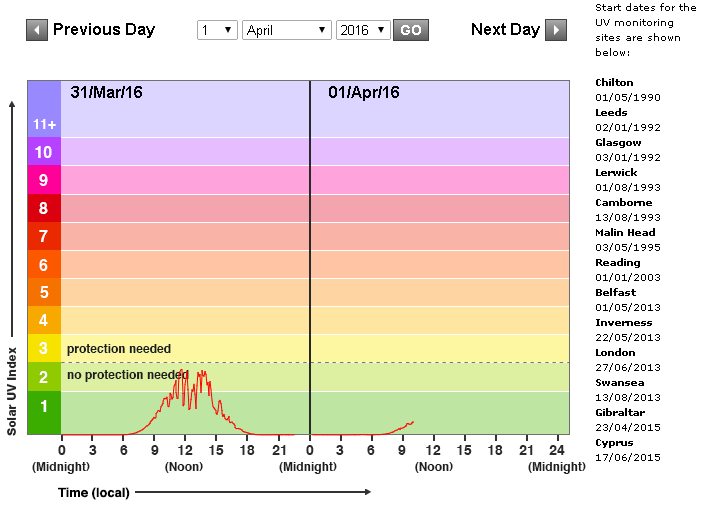
7) You can check UV levels yourself and take action
Real time UV measurements across the UK are available on our part of the UK Air website. We have also extended our measurement network to include Gibraltar, so that the UV Index can be compared with levels at home.

8) It’s easy to protect ourselves when we’re out and about
When sunny weather is expected, check Met Office UV Index Forecasts and our measurements, pop on a wide-brim hat, slip on a shirt, slap on suncream (at least SPF 15 with UVA protection, and if the levels are really high here in the UK, avoid being out in the sun too long between 11am-3pm). Also remember that UV can damage the eyes too. Wearing wraparound sunglasses with UV protection - not all sunglasses have this - and a wide brimmed hat can help minimise your eyes’ exposure to UV.
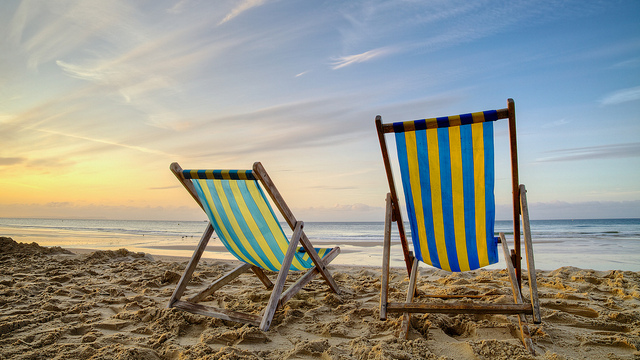
9) Some UV is good for us
Some UV exposure is good for you because it helps our bodies make Vitamin D – which is good for keeping our bones and teeth strong and healthy. The amount of time you need in the sun to make enough Vitamin D is different for everyone. Most people will make enough vitamin D if they have a short daily period of sun exposure around midday without sunscreen during the summer months. You can get enough Vitamin D before you get sunburn.
Image credits:
Cloudy day: Dan Blows
Beach: Bryanesque
Deckchairs: Richard Walker

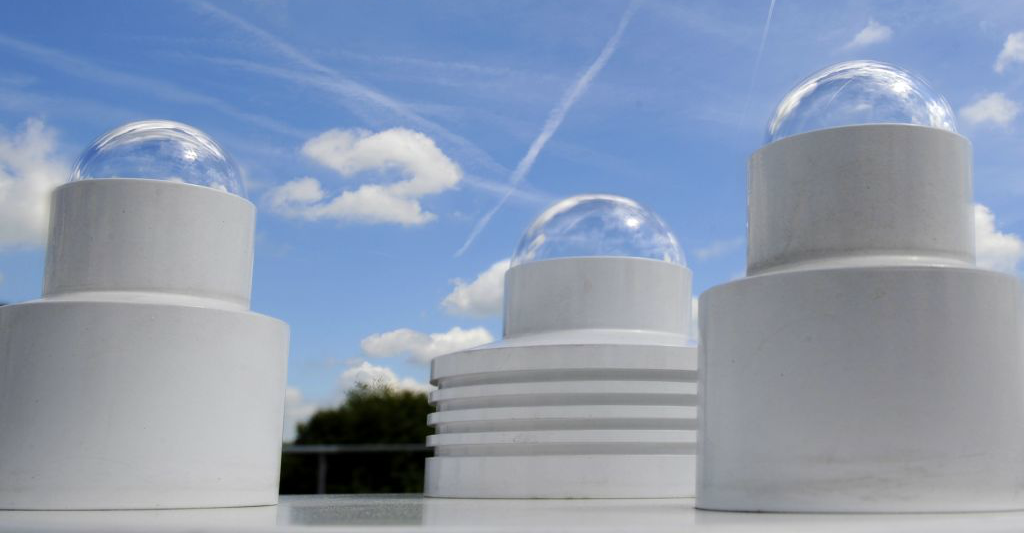
1 comment
Comment by steve posted on
Interesting article though more should be said about insufficient UV in the winter months which can lead to vitamin D deficiency.